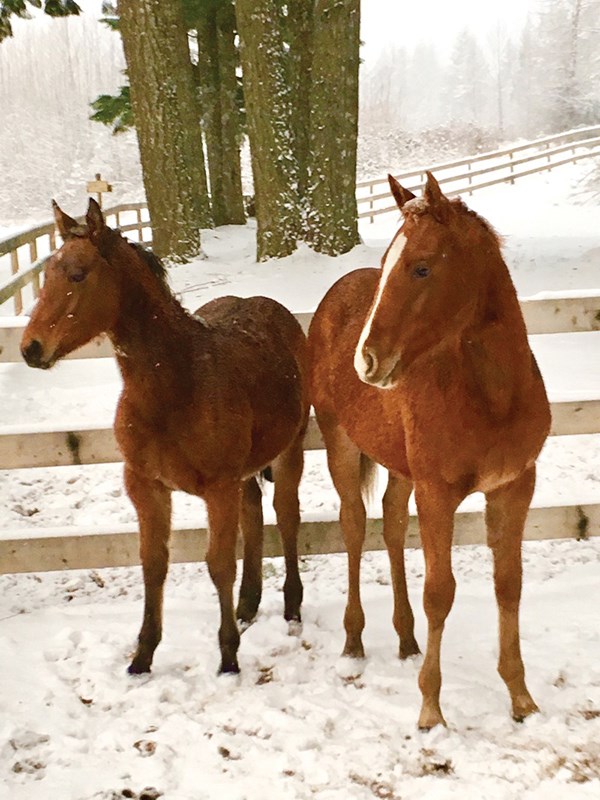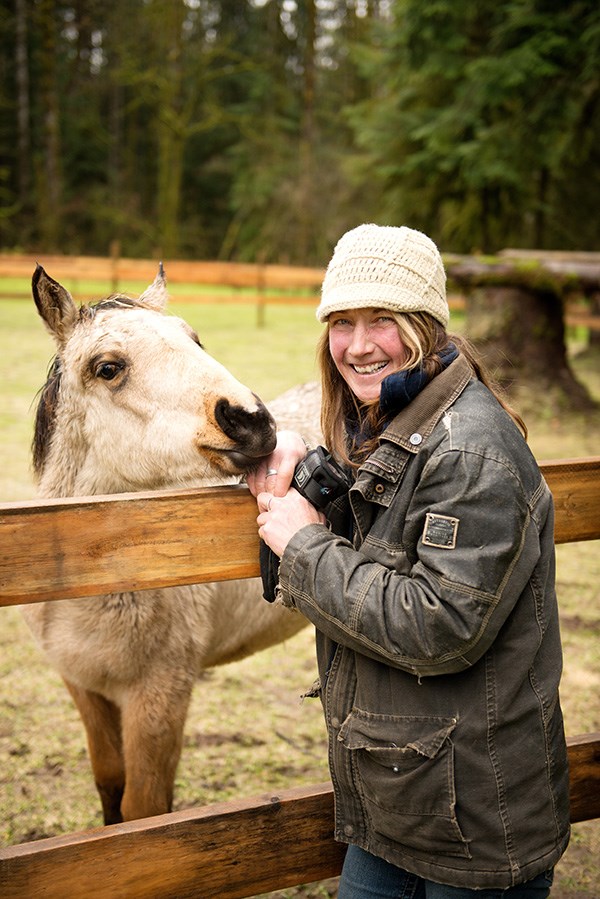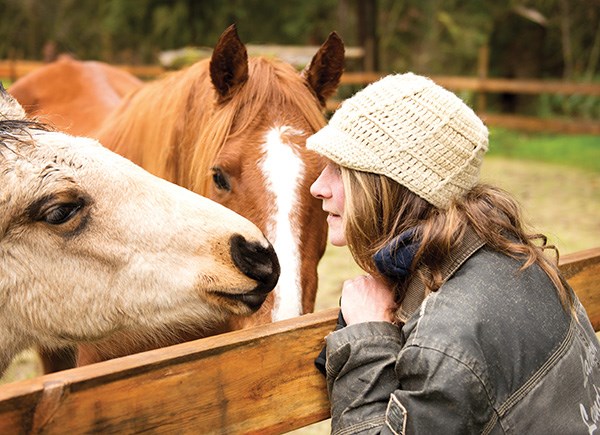Cheekye Ranch has a few new tenants.
Nine new horses acquired by the Squamish ranch through its newest initiative can now be found blissfully meandering through the paddocks after narrowly escaping a one-way ticket to the dinner table.
Established three months ago by Lisa Chiasson and Cheekye Ranch co-owner Kris Latham, Second Chance at Cheekye Ranch is giving horses that would otherwise be bound for the slaughterhouse another shot at life.
So far, it’s managed to save the lives of two mares, three geldings and four foals.
The program aims to acquire horses en-route to slaughter, rehabilitate and train them in order to prepare these horses for good homes and eventually facilitate the animals’ adoptions.
The ranch, which opened two-and-a-half years ago as an events space and eventually began boarding horses, serves as the perfect venue.
“Horses and animals in general have been my passion since I was knee-high to a grasshopper, so being able to have the acreage here, it just fit,” said Latham, adding that launching the program was a natural progression after first rescuing three mares that were destined for slaughter a year and a half ago.
“I ended up getting them down here to find that they were – all three – pregnant. I’ve had those rescue guys here since and they are the most amazing animals. It’s just so sad to know that these beautiful, perfectly healthy animals just need a second chance”
The pair had wanted to help horses for a while, added Chiasson.
“It fell into place very quickly and very easily.”
Part of Second Chance at Cheekye Ranch’s purpose is to help educate the public on the highly prevalent yet rarely discussed practice of horse slaughter for human consumption – a practice that became a problem neither Latham nor Chiasson could stand to ignore.
With horsemeat not typically considered part of an average Canadian diet, it’s reasonable to assume most Canadians would be surprised to learn that their country is a global leader in the slaughter of horses for human consumption.
In 2011, more than 82,000 horses were slaughtered within Canadian borders, according to the Canadian Meat Council – that’s nearly 1,600 every week. Over 85 per cent of Canada’s horsemeat is then shipped off, mostly to Asia or Europe.
While the Canadian industry was on the decline for most of the 2000s, it made its resurgence in 2007 when the United States Congress stopped funding inspections of their country’s equine slaughterhouses, effectively shutting down those facilities and ending the practice of horse slaughter for human consumption on American soil.
As a result, that year saw a sizeable increase in the number of horses imported to Canada for slaughter from the U.S. According to Agriculture and Agri-Food Canada, the number of horses slaughtered in federally and provincially inspected establishments rose to 113,318 in 2008, up from 79,578 the previous year.
In addition to these thousands of horses trucked in over the border, more than 50 per cent of the horses sold at rural auctions in Canada are purchased by “kill buyers” to be used for meat, according to Humane Society International.

“Whichever horses aren’t getting bid on, they’ll take them for their minimum bid and ship them off to slaughter,” Chiasson explained.
And these aren’t just old, lame or injured animals, either. Many of the horses that meet this fate are young, healthy and often well trained.
Aside from rural auctions, there are several ways a horse could find its way to the meat factory. Some are thoroughbred racehorses that can no longer compete, with their careers often ending at only three to six years old.
More are rounded up for the slaughterhouse during herd culls, typically as a result of over-breeding. This was the case for a few of Second Chance at Cheekye Ranch’s recently rescued horses.
“They were basically being rounded up because they had too many horses,” said Chiasson.
“The quick solution where (the breeders) actually get paid and the horses are no longer their issue is to ship them to the kill pen.”
“To think that these animals would go through that kind of terror, and these are just nine animals that we’ve managed to keep from that,” added Latham.
“There’s thousands and thousands of these perfectly healthy, beautiful animals that are being put through that terror of being slaughtered.”
The rescue process begins when Chiasson and Latham get a tip (often through Belinda Lyall, who runs The True Faces of Horse Slaughter rescue organization in Salmon Arm) about a shipment of horses somewhere in the province that are about to be sent to “kill pens” to await slaughter. The ranch’s founders then set off on the chaotic path to intercepting and physically acquiring the animals.
“The toughest part is getting connected with the people that know when those horses are going to be shipped,” Chiasson explained.
“Once you’ve got the information on the horses that are going to be shipped, then it’s just a rally to find a way to intercept, to pay for their meat price and rallying to get a trailer to get the horses out.”
Once safely in Latham and Chiasson’s possession in Squamish, the pair, along with their volunteers, work to rehabilitate and train the rescued horses in order to ready them for an eventual adoption.
However, this process isn’t exactly cheap. First, Latham and Chiasson must purchase the horses for the same price the slaughterhouse would – usually ranging from $200 to $400 per animal – then arrange for their trailering and transport back to Squamish.
Once the horses arrive at the ranch, the standard overhead costs that come with caring for horses, like food, vet bills, equipment, and building and maintaining paddocks apply as well, not to mention the time spent working with the animals.
While Second Chance at Cheekye Ranch awaits its pending approval as a society in Canada, (the second step of that process would see the federal government grant SCCR with not-for-profit status), Latham and Chiasson are currently covering most of these costs out of pocket, aside from the help of a few donations from supporters – they’ve started a GoFundMe campaign that’s so far raised just over $1,400 of its $10,000 goal.
“The fundraising process is always ongoing,” said Chiasson.
“Donations are a big, critical piece to this whole puzzle.”
But despite all the hard work throughout the past three months that has gone into making each of these rescues possible, Latham said it’s all worth it to save animals’ lives.
“It’s incredible,” she said. “It just gives me goose bumps when the horses come in off the trailer. The anticipation of [the horses] getting here and all the work involved to get them organized and in a safe environment here, it’s better than Christmas morning as a kid for me.”
For more information on Cheekye Ranch’s program go to
www.secondchancecheekyeranch.com.




